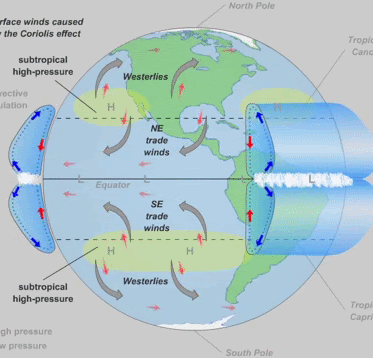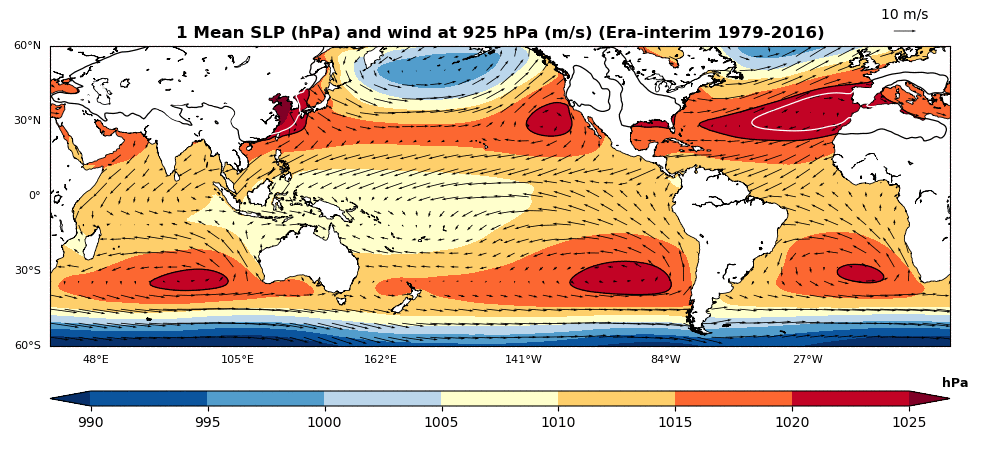Research
Publications
Ph.D. Thesis
Influence of Tropical Diabatic Heating and Midlatitude Static Stability on Subtropical Anticyclones. Abdullah A.. Fahad, (2020). 10.13140/RG.2.2.32449.99682. PDF
Papers in Preparation and Under Review
12. The Nonlinear Climate Response to CO2 and Aerosol Forcing for Decadal Climate Simulations: Abdullah A. Fahad, Andrea Molod, Dimitris Menemenlis. (In preparation).
Peer Reviewed
11. Fahad et al. 2023: Climate Change Quadruples Frequency of Flood-Causing Extreme Monsoon Rainfall Events in Bangladesh and Northeast India. QJRMS (accepted), http://dx.doi.org/10.13140/RG.2.2.25321.88160
10. Fahad, A. A., O. Reale, A. Molod, T. A. Sany, M. T. Ahammad, and D. Menemenlis, 2023: The Role of Tropical Easterly Jet on the Bay of Bengal’s Tropical Cyclones: Observed Climatology and Future Projection. J. Climate, 36, 5825–5840, https://doi.org/10.1175/JCLI-D-22-0804.1.
9. Cramwinckel, M. J., Burls, N. J., Fahad, A. A., Knapp, S., West, C. K., Reichgelt, T., et al. (2023). Global and zonal-mean hydrological response to early Eocene warmth. Paleoceanography and Paleoclimatology, 38, e2022PA004542. https://doi.org/10.1029/2022PA004542.
8. Ehud Strobach, Patrice Klein, Andrea Molod, Abdullah A. Fahad, Atanas Trayanov, Dimitris Menemenlis, Hector Torres. “Local Air-Sea Interactions at Ocean mesoscale in Western Boundary Currents.” Geophysical Research Letters (2022). (Accepted)
7. Fahad et al. “The Role of Local Topography and Sea Surface Temperature on Summer Monsoon Precipitation over Bangladesh and its Surrounding Regions.” International Journal of Climatology (2021).
6. Abdullah al Fahad, Natalie J. Burls. “The Influence of Direct Radiative Forcing versus Indirect Sea Surface Temperature Warming on Southern Hemisphere Subtropical Anticyclones.” Clim Dyn (2021). https://doi.org/10.1007/s00382-021-06006-1
5. Abdullah al Fahad, Natalie J. Burls, Erik T. Swenson, David M. Straus. “The Influence of South Pacific Convergence Zone Heating on the South Pacific Subtropical Anticyclone.” Journal of Climate (2021). https://doi.org/10.1175/JCLI-D-20-0509.1
4. Isla Ruth Simpson, Karen McKinnon, Frances Davenport, Martin Tingley, Flavio Lehner, Abdullah Al Fahad, Di Chen. “Emergent constraints on the large scale atmospheric circulation and regional hydroclimate: do they still work in CMIP6 and how much can they actually constrain the future?” Journal of Climate (2021). https://journals.ametsoc.org/view/journals/clim/aop/JCLI-D-21-0055.1/JCLI-D-21-0055.1.xml
3. Abdullah Al Fahad, Natalie J. Burls, Zachary Strasberg. “How will southern hemisphere subtropical anticyclones respond to global warming? Mechanisms and seasonality in CMIP5 and CMIP6 model projections.” Climate Dynamics (2020), 1-16. https://doi.org/10.1007/s00382-020-05290-7 PDF
2. Natalie J. Burls, Ross C. Blamey, Benjamin Cash, Erik T. Swenson, Abdullah Al Fahad, Mary-Jane Bopape, David Straus, Chris J.C. Reason. “Cape Town ‘Day Zero’ drought and Hadley Expansion.” Npj Climate and Atmospheric Science, 2(1), 27 (2019). https://doi.org/10.1038/s41612-019-0084-6 PDF
1. Erik T. Swenson, David M. Straus, Chelsea E. Snide, Abdullah Al Fahad. “The Role of Tropical Heating and Internal Variability in the California Response to the 2015/16 ENSO Event.” Journal of the Atmospheric Sciences (2019), JAS-D-19-0064.1. https://doi.org/10.1175/JAS-D-19-0064.1 PDF
CONFERENCE PROCEEDING
9. The Influence of Direct Radiative Forcing versus Indirect Sea Surface Temperature Warming on Southern Hemisphere Subtropical Anticyclones, A Al Fahad, N Burls, AGU Fall Meeting 2020
8. Emergent Constraints on the Large Scale Atmospheric Circulation and Regional Hydroclimate: Do They Still Work in CMIP6 and How Much Can They Actually Constrain the Future? I Simpson, KA McKinnon, F Lehner, FV Davenport, A al Fahad, D Chen, …AGU Fall Meeting 2020
7. Intensification of the hydrological cycle during Eocene ‘greenhouse’ climates. M Cramwinckel, N Burls, T Reichgelt, DR Greenwood, CK West,… AA Fahad …..AGU Fall Meeting 2020
6. The Role of Tropical Heating and Internal Variability in the California Response to the 2015/16 ENSO Event. CE Snide, ET Swenson, DM Straus, A al Fahad. 34th Conference on Hurricanes and Tropical Meteorology. 2020
5. Do CMIP5 emergent constraints on the large scale atmospheric circulation work to constrain CMIP6 projections? I Simpson, F Davenport, AA Fahad, F Lehner. EGU General Assembly Conference Abstracts, 2020
4. The Cape Town “Day Zero” drought and Hadley cell expansion. B Cash, N Burls, RC Blamey, E Swenson, A Al Fahad, MJM Bopape, … AGU Fall Meeting 2019
3. Understanding the intermodal spread in CMIP5 Projections of Southern Hemisphere Subtropical Anticyclones and Hadley Cell Edge. AA Fahad, N Burls. AGUFM 2019, A33S-3097
2. An Analysis of CMIP6 Climate Model Performance in Simulating Climatological Conditions Compared to CMIP5. C Liang, A Hall, A al Fahad, NJ Burls. Journal of Student-Scientists’ Research. 2019
1. How will the South Atlantic Subtropical High Respond to Climate Change? – Evaluating CMIP5 Model Predictions. A Fahad, Z Strasberg, NJ Burls. American Geophysical Union. 2018
DOCTORAL RESEARCH
Uneven heating of the Earth’s surface acts as the primary driving force behind large-scale atmospheric circulation between the tropics and high latitudes. Warm air rises in the tropics and descends over the subtropics of the both hemispheres and completes a circulation pattern known as Hadley Circulation (Fig.1).

Figure (1): Hadley circulation due to uneven heating on earth surface. (Source)
The descending branch of the Hadley circulation creates a high-pressure system in the subtropical regions of the both hemispheres. Radiative cooling is the primary mechanism that allows subtropical air to descend. These high-pressure systems produce an anticyclonic atmospheric circulation over the surface of subtropical oceans in both hemispheres known as subtropical anticyclones (SA) (Fig.2).

Figure (2): Subtropical Anticyclone (SA) shown by 1020 hPa SLP climatology (contoured) calculated from Era-interim (1979-2016) reanalysis data.
These SAs are an important element of the coupled ocean-atmosphere system within the subtropics dictating oceanic conditions. Although SAs are associated with the descending branches of the Hadley cells, the various mechanisms that control their respective strengths, seasonality, internal variability and response to climate change are still debated within the scientific literature. For example, seasonal cycles in the area, intensity, and position of the SAs in both hemispheres show distinct patterns. If Hadley cell decent were the only mechanism controlling the strength of the SAs one would expect each SA to reach their maximum strength in local winter when the Hadley cell is at its strongest within the respective hemisphere. While this is true for the Southern Hemisphere with SAs strength generally peaking during June-July-August (JJA) within the Southern Hemisphere (SH), this does not occur in the Northern Hemisphere (NH). SAs in the NH also peak in JJA despite that fact that the NH branch of the Hadley cell is at its seasonal minimum (Hoskins 1996). This aspect raises the central question: what drives the strength and structure of the SAs?